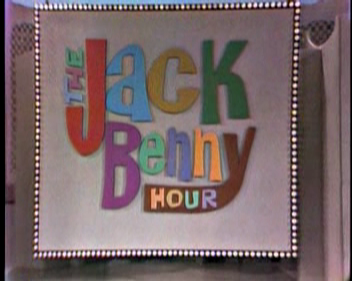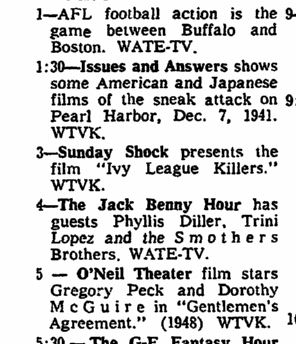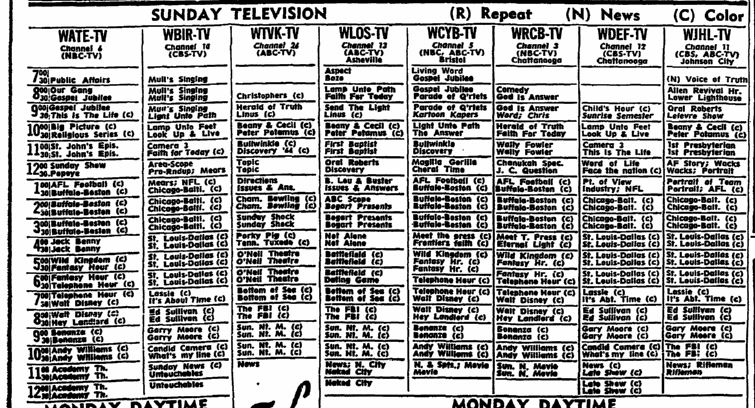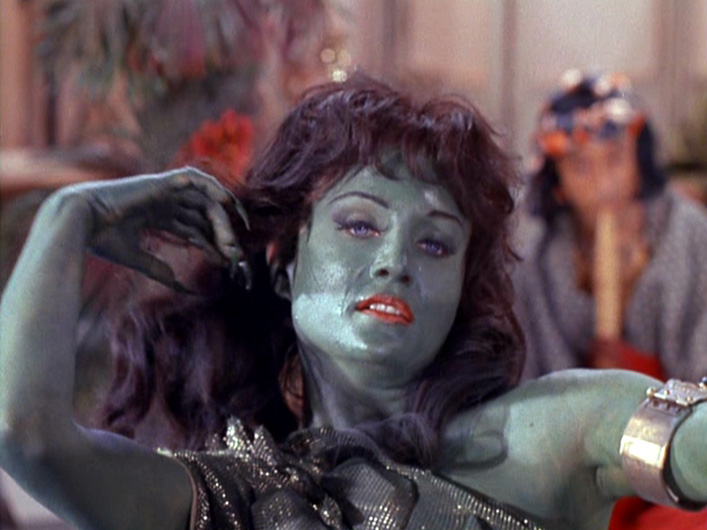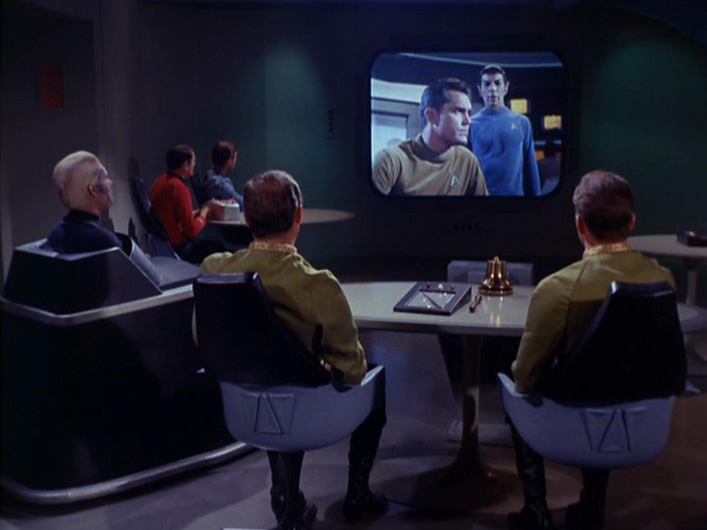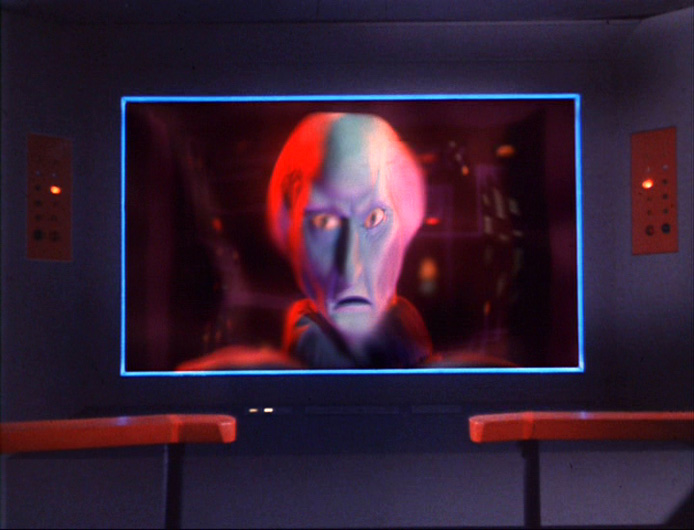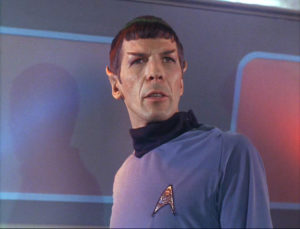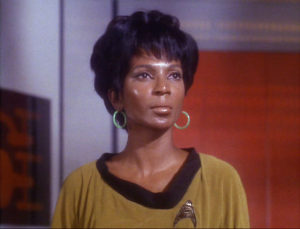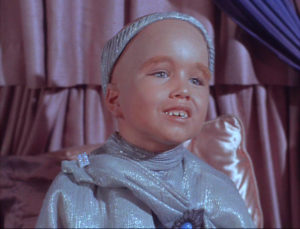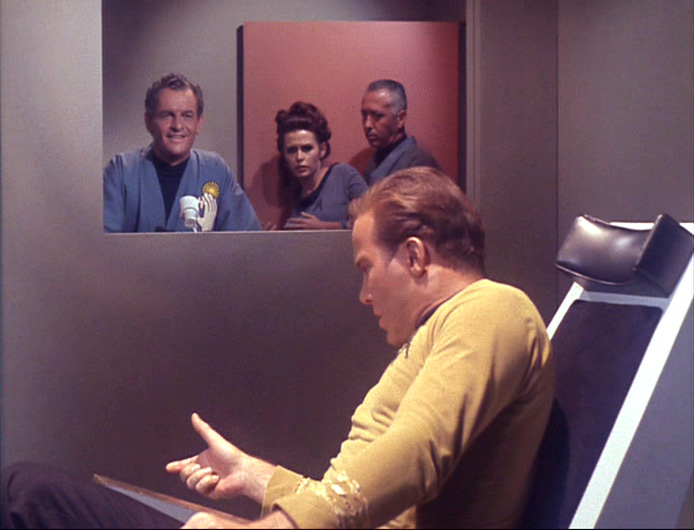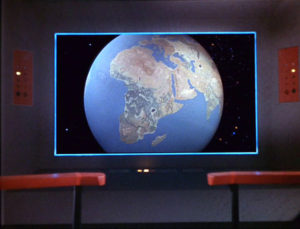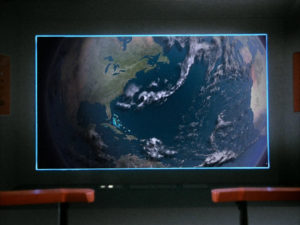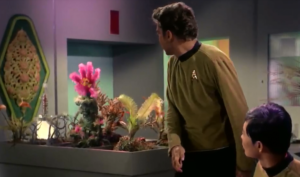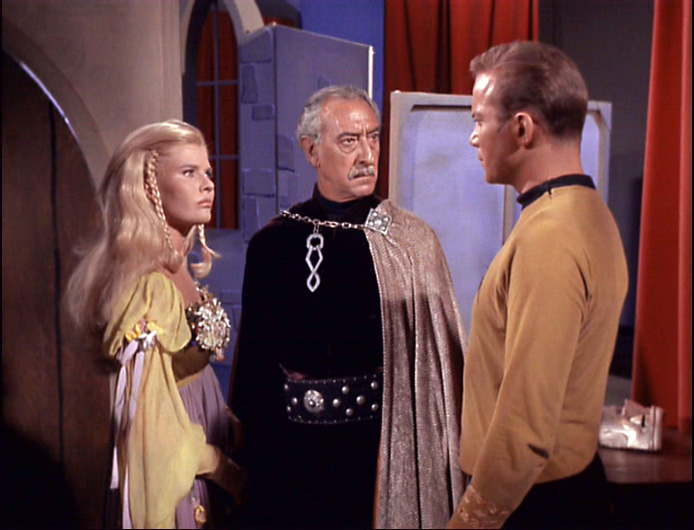
Shakespeare is the beast that speaks to a lot of people’s souls. The Bard’s writings are often quoted in a lot of Star Trek series and movies over the last 50 years. This episode, “The Conscience of the King” is unique in that the participants are actually doing Shakespeare out in space.
They are a touring company, led by Anton Karidian and his daughter Lenore, as they put it in the script:
another in a series of living plays presented in space, dedicated to the tradition of classic theater.
But there is a hitch, Anton might actually be Kodos the Executioner, a figure who declared martial law on a planet where the food supplies had run out some time ago. And if that wasn’t bad enough, the people who could identify him (his body was never found) are dying left and right and the actors happen to be nearby. Captain Kirk was one of them.
Now you may ask yourself at this point, “Is this Star Trek? Is this a story that fits into the narrative of this show?” Well, yes and no. Trek would deviate more from the norm as later series unfolded. The list is too long to go into in this post, but you get the idea.
The story is a good premise, but where I find it lacking is the fact that in a futuristic society such as the 23rd century… how could the Karidians get away with it for so long? Are the authorities who investigate things just so inept with more advanced tools than was available in 1966, and surely in 2016, to not be able to detect where Kodos was this whole time? Or for that matter that Lenore was committing the murders of seven of the eyewitnesses before the events on the Enterprise unfolded? I find that very hard to believe. One has to suspend their disbelief to the extreme in order to swallow the implications of that point.
Once the action gets on board the ship, a couple of questionable things happen. The attempt on Kirk’s life is made by a phaser set to overload and put in his quarters in the flashing red alert light above his cabin door. Now how in the world did Lenore get it in there without being discovered? Where did she get a phaser? As we find out later on, Riley (the other eyewitness who hasn’t been liquidated at this point) broke into a weapons locker and stole a phaser himself. They sure don’t secure the weapons very well on this ship, do they?
Oh, and one more thing… in terms of the production order, this is Grace Lee Whitney’s last appearance on the series as Yeoman Janice Rand. However, she doesn’t go out without a loose parting shot. Just check out this nasty look she gives Lenore Karidian:
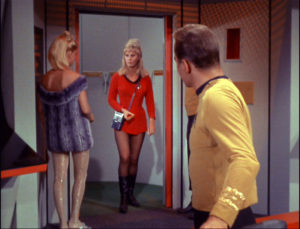
If looks could kill…
Next week: another venerable alien race makes it’s Trek debut.
